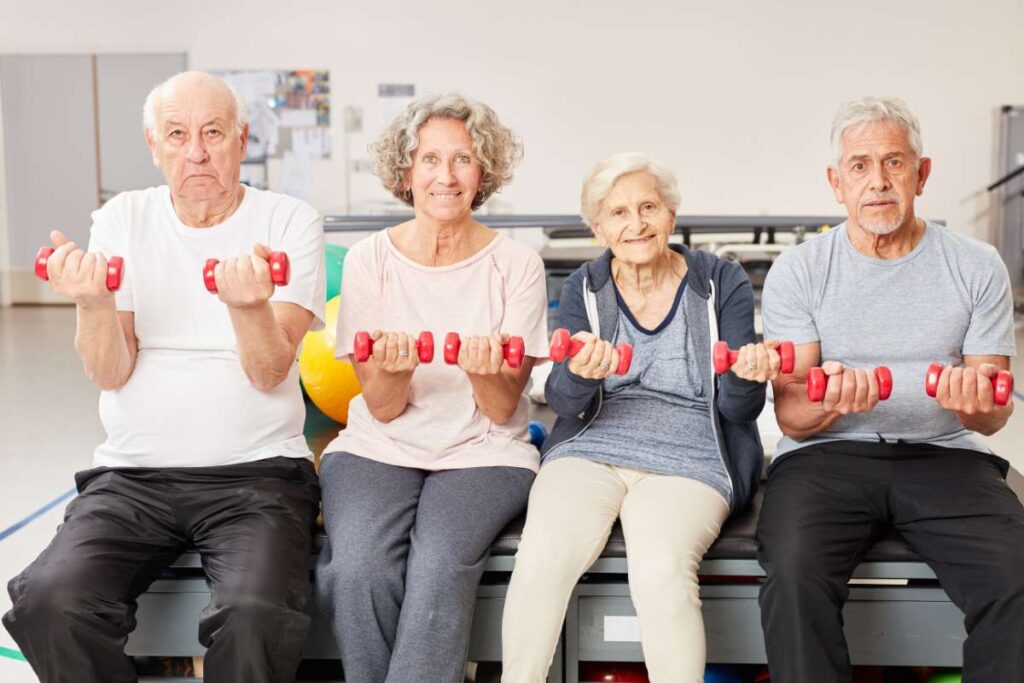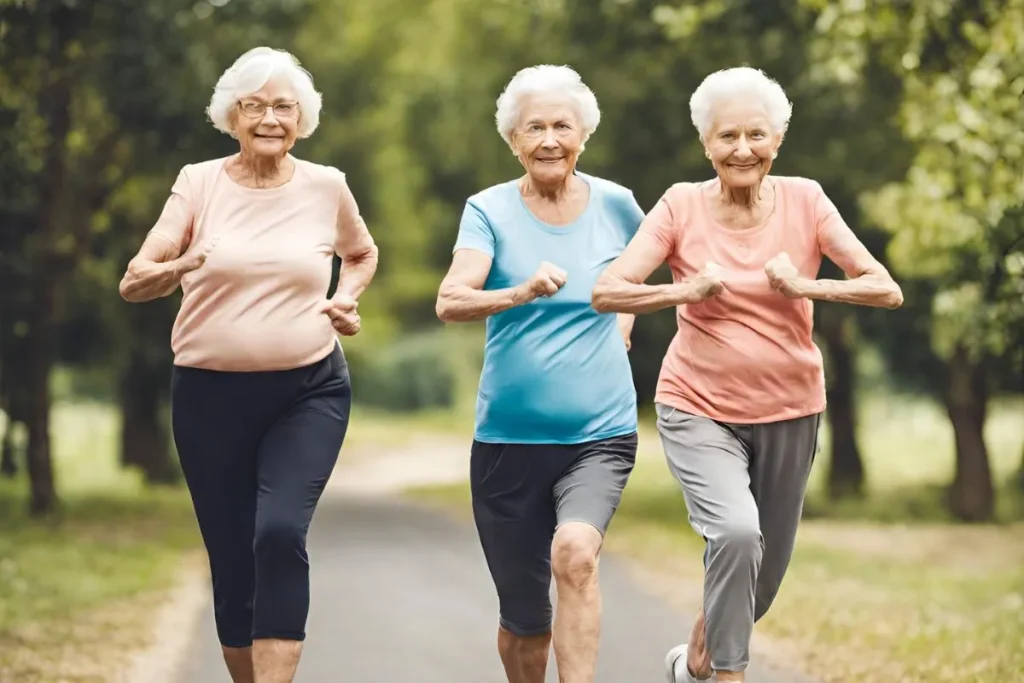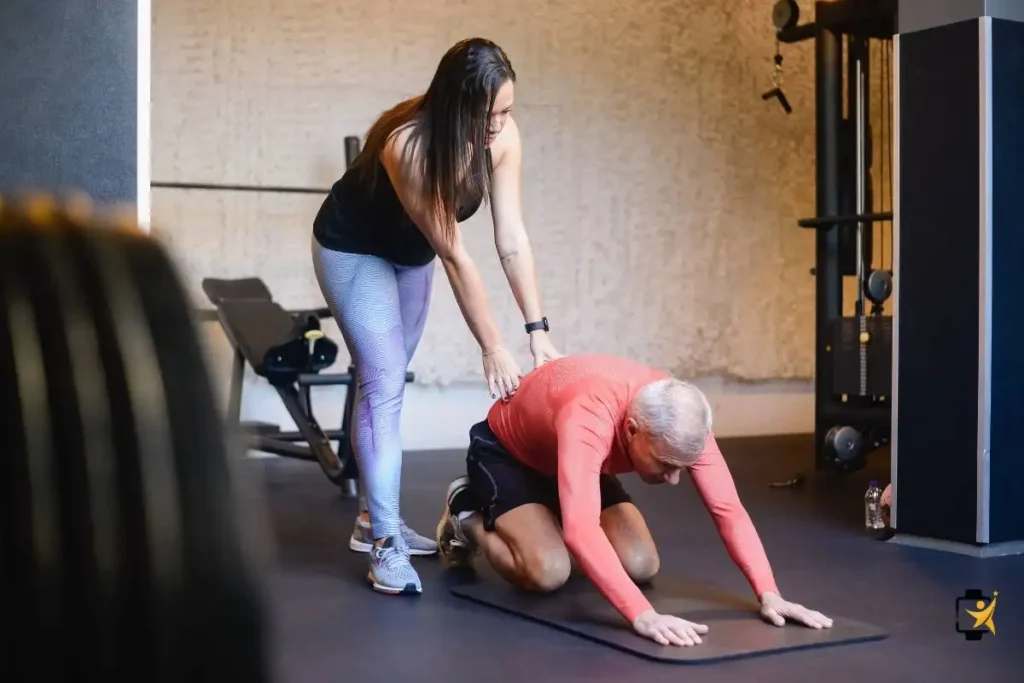Group exercise classes offer numerous advantages specifically tailored to the needs of seniors. These classes foster a supportive environment that promotes physical health while enhancing social connections and mental well-being.
Promotes Social Interaction
Group exercise classes create a community atmosphere that enables seniors to engage with others. Social interaction combats feelings of isolation that many older adults experience.
Participants form friendships, share experiences, and support one another during workouts. This sense of camaraderie boosts morale and encourages regular attendance.
Social interaction within these classes can lead to increased participation in other activities. Seniors often expand their social networks, which contributes to a richer, more fulfilling lifestyle.
Improves Physical Health
Regular participation in group exercise can significantly improve physical health in seniors. These classes often focus on strength, flexibility, and cardiovascular fitness.
Targeted exercises help enhance balance and coordination, reducing the risk of falls. Strength training builds muscle mass, which is crucial for mobility and daily functioning.
Group classes are typically designed to be age-appropriate, taking into consideration the unique health concerns of seniors. This ensures that participants can exercise safely and effectively while receiving guidance from trained instructors.
Enhances Mental Well-being
Group exercise contributes to better mental health among seniors. Physical activity is known to release endorphins, which can help alleviate symptoms of depression and anxiety.
Engaging in group settings can also foster a sense of purpose and accomplishment. Seniors feel empowered as they achieve fitness goals alongside their peers.
Learning new exercises and routines can keep the mind sharp. Cognitive engagement during classes aids in maintaining mental acuity and focus.
Increases Motivation and Consistency
The structured environment of group exercise classes often leads to greater motivation among seniors. Knowing that peers are participating creates a sense of accountability that encourages regular attendance.
Instructors play a crucial role in maintaining the group’s enthusiasm. Their guidance and encouragement help seniors push beyond perceived limits.
The variety offered in group classes reduces the risk of boredom. This diversity keeps participants interested and engaged, promoting a consistent exercise routine.
Types of Group Exercise Classes
Group exercise classes offer various options tailored to promote health and well-being among seniors. These classes encourage social interaction, enhance physical fitness, and can be adapted to different levels of ability.
1. Aquatic Aerobics
Aquatic aerobics combines cardiovascular exercises with resistance training in a supportive water environment. This format reduces the impact on joints, making it particularly beneficial for seniors with arthritis or limited mobility. Classes typically include exercises such as water jogging, leg lifts, and arm strokes.
Participants enjoy the buoyancy that water provides, which allows for more freedom of movement. Instructors often incorporate music to enhance motivation and enjoyment. The warm water can also help alleviate muscle tension and improve circulation.
2. Yoga and Pilates
Yoga and Pilates focus on flexibility, balance, and core strength, essential elements for maintaining mobility as one age. Classes often feature gentle stretching, breathing techniques, and mindfulness practices.
Seniors can benefit from the low-impact nature of these exercises. Specialized classes may be available, catering specifically to seniors’ needs and physical capabilities. Props such as blocks and straps can be used to enhance stability and support.
Regular participation can lead to improved posture, reduced stress, and increased overall well-being. Many seniors appreciate the community aspect of these classes, fostering social connections in addition to physical benefits.
3. Strength Training Circuits
Strength training circuits are designed to build muscle strength and endurance through a series of exercises targeting major muscle groups. These classes often utilize resistance bands, dumbbells, and body weight for a comprehensive approach.
Exercises may include chair squats, seated rows, and wall push-ups. The circuit format allows participants to move quickly between exercises, keeping heart rates elevated while promoting efficiency.
Instructors ensure that seniors use the correct form and that modifications are provided as needed. Regular participation in strength training can lead to improved bone density, reduced risk of falls, and enhanced functional fitness.
4. Dance-Based Fitness
Dance-based fitness classes meld movement with rhythm, making exercise enjoyable and engaging. Styles may vary from Zumba to line dancing, allowing participants to choose according to their preferences.
These classes provide an uplifting atmosphere that contributes to mental well-being. Participants engage in low-impact routines that enhance coordination, balance, and cardiovascular health.
Instructors often promote a fun, social environment where seniors can connect with others while learning new dance skills. The joy of movement can lead to increased motivation to remain active.
Adapting Workouts to Senior Fitness Levels
Adjust workout routines to meet the unique needs of seniors. By modifying exercises and monitoring intensity, fitness programs can promote safety and effectiveness for older adults.
Modifying Exercises for Safety
Modifying exercises ensure safety while maintaining effectiveness. Many traditional movements can be adapted to accommodate reduced flexibility and strength.
Examples of modifications include:
- Chair Exercises: For those with balance issues, exercises such as seated leg lifts or seated arm curls provide a stable base.
- Lower Impact Variations: Activities like cycling or water aerobics reduce stress on joints while offering cardiovascular benefits.
- Resistance Alternatives: Using resistance bands instead of free weights can offer effective strength training with a lower risk of injury.
Instructors should observe participants and make real-time adjustments as needed. This approach fosters a supportive environment and enhances participant confidence.
Monitoring Intensity and Endurance
Monitoring intensity is crucial for ensuring that seniors achieve fitness goals without overexertion. Utilizing tools such as the Rate of Perceived Exertion (RPE) can help seniors communicate their comfort levels.
- RPE Scale: Ideally, seniors should aim for a level of 4-6 on a scale of 1-10 during moderate exercise.
- Heart Rate Monitoring: Keeping track of heart rates can also guide the intensity of the workout. For most seniors, a target heart rate of 50-70% of their maximum is safe.
Gradual Progression:
Endurance should be built gradually. When increasing the duration or intensity of workouts, small increments—no more than 10% per week—are advisable. This strategy minimizes the risk of injury and encourages long-term adherence to exercise programs.
Role of Instructors in Senior Group Exercises
Instructors play a role in senior group exercise classes. Their expertise ensures participants engage safely and effectively while also fostering a supportive atmosphere that encourages participation.
Ensuring Proper Technique
Instructors are responsible for teaching proper exercise techniques to seniors. They provide tailored guidance to accommodate individual health concerns and physical limitations. This attention to form not only minimizes the risk of injury but also enhances the effectiveness of each exercise.
They often demonstrate movements, allowing seniors to observe and mimic. Instructors may use visual aids, such as videos or illustrations, to clarify complex movements. Regular check-ins with participants help identify any difficulty in technique, allowing for immediate correction and support.
By ensuring proper technique, instructors empower seniors to build strength and improve mobility safely. This guidance fosters confidence in participants, encouraging them to engage fully in each session.
Providing Motivation and Support
Motivation is a key aspect of a successful group exercise environment. Instructors create an uplifting atmosphere that encourages seniors to challenge themselves while feeling supported.
They offer positive reinforcement, recognizing individual achievements, no matter how small. This acknowledgment instills a sense of accomplishment and promotes continued participation. Instructors may use group dynamics, encouraging participants to support one another, which enhances the social aspect of exercise.
To maintain enthusiasm, instructors regularly introduce variety into their sessions. They may incorporate music, themed classes, or fun challenges to keep seniors engaged. This strategic approach not only transforms exercise into an enjoyable activity but also helps build a sense of community among participants.
Community and Support Systems
Group exercise classes provide seniors with not only physical activity but also essential social interactions and support networks. These classes foster relationships that enhance emotional well-being and create avenues to leverage community resources.
Building Relationships Through Fitness
Participating in group exercise enables seniors to build meaningful relationships. Regular attendance promotes familiarity, allowing participants to connect with others who share similar interests.
The social aspect of these classes can reduce feelings of isolation, which is prevalent among seniors. Engaging in light-hearted conversations during workouts fosters camaraderie.
As friendships develop, participants often support each other, encouraging consistency in attendance and personal fitness goals. This relational dynamic can lead to increased motivation and adherence to exercise routines.
Leveraging Community Resources
Many fitness programs for seniors are linked to community resources that extend beyond the exercise classes. Local health organizations may offer workshops or educational sessions that address health concerns relevant to older adults.
Community centers often collaborate with fitness instructors to develop classes tailored to seniors. These collaborations enhance accessibility and encourage participation.
Participants can also benefit from partnerships with local healthcare providers, creating opportunities for screenings or health evaluations post-class. Such resources enrich the overall experience, making group classes not only beneficial for fitness but also a vital part of a supportive community network.
Evaluating the Impact of Group Exercise on Senior Health Outcomes
Group exercise classes provide structured activities that significantly contribute to improved physical health and well-being in seniors. They foster an environment that enhances mobility and reduces various health risks.
Improvement in Mobility and Independence
Group exercise classes play a crucial role in enhancing mobility for seniors. Participants engage in activities designed to improve strength, flexibility, and balance. These factors are vital for maintaining independence in daily life.
Key benefits include:
- Increased Strength: Weight-bearing exercises strengthen muscles, promoting better mobility.
- Enhanced Flexibility: Stretching routines improve the range of motion, which aids in performing everyday tasks.
- Better Balance: Activities such as yoga and tai chi help reduce the risk of falls.
Regular participation in these classes encourages seniors to become more active, leading to improved confidence in their physical abilities.
Reduction in Health Risks
Engaging in group exercise can significantly reduce health risks associated with aging. These classes often include cardiovascular workouts, which contribute to heart health and overall physical fitness.
Notable health improvements include:
- Lower Blood Pressure: Regular physical activity helps maintain healthy blood pressure levels.
- Weight Management: Group settings promote accountability, aiding in weight control through collective motivation.
- Mental Health Benefits: Social interaction during classes can combat feelings of loneliness and depression, often prevalent among seniors.
Consistent participation in group exercise classes supports a healthier lifestyle and decreases the likelihood of chronic diseases, making a substantial difference in overall health outcomes for seniors.




